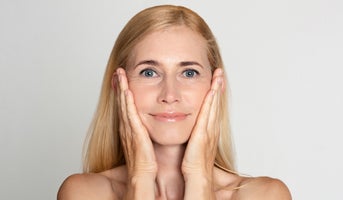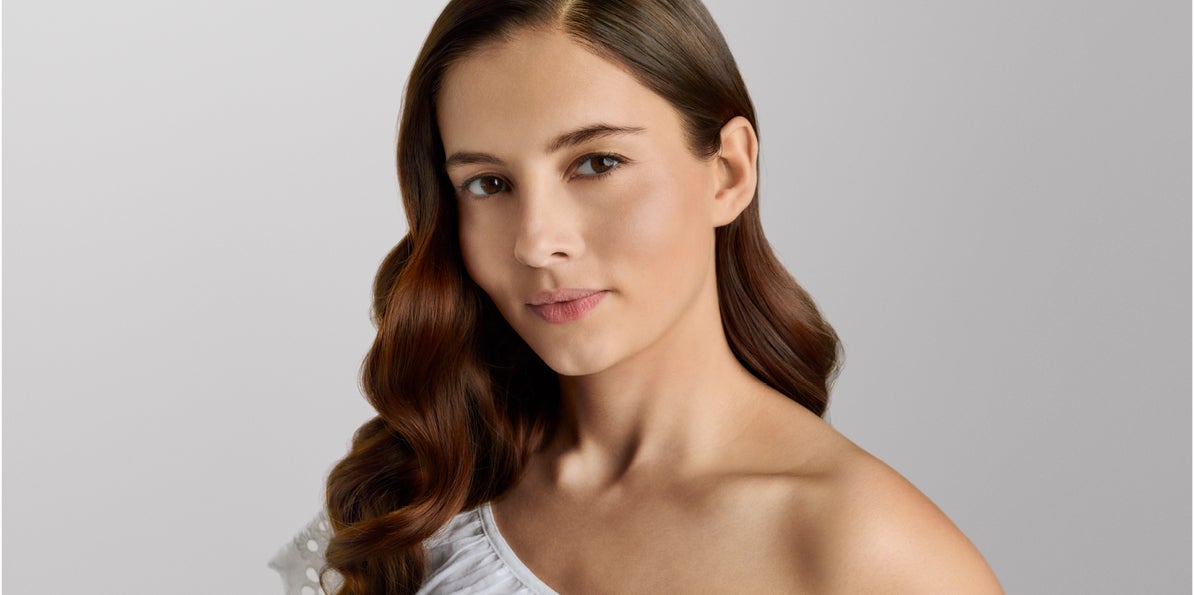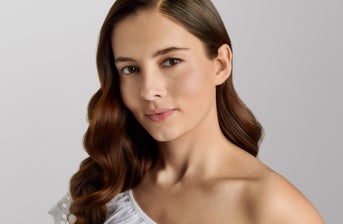For radiant, hydrated skin, ask for Restylane® Skinboosters™
When we feel good about our skin, we feel good about ourselves, but over time our skin can lose its natural radiance.¹ Now it is possible to boost your skin from within. Restylane Skinboosters infuses a thin layer of micro droplets of hyaluronic acid beneath the skin surface, where it draws water and provides long-term deep hydration. You will get a refreshed and radiant look that lasts.

Why Restylane Skinboosters?
Hyaluronic acid is a natural component of your skin that keeps it hydrated and soft. With age, or due to a harsh environment, the hyaluronic acid content in your skin may decrease, and your skin may lose some of its elasticity and hydration.
Restylane Skinboosters restores the natural composition of your skin. It boosts skin elasticity2 and you will notice a reduction of skin roughness3. Your skin becomes smooth and hydrated for a refreshed and healthy look.
TREATMENT AREAS
Restylane Skinboosters brings hydration and softness to areas that feel dry, that have lost elasticity, or where fine lines and wrinkles have started to appear.
Treatment areas: Restylane Skinboosters can be used on the skin of your face, neck, décolletage and hands.
Clinical studies prove the lasting impact of Restylane Skinboosters. Physicians reported Restylane Skinboosters gave their patients smoother, more radiant looking skin.4

TREATMENT AREAS

Restylane Skinboosters brings hydration and softness to areas that feel dry, that have lost elasticity, or where fine lines and wrinkles have started to appear.
Treatment areas: Restylane Skinboosters can be used on the skin of your face, neck, décolletage and hands.
Clinical studies prove the lasting impact of Restylane Skinboosters. Physicians reported Restylane Skinboosters gave their patients smoother, more radiant looking skin.4

Your treatment
Restylane Skinboosters gradually builds up your skin’s hydration and smoothness. A typical treatment program starts with 3 treatment sessions, 2-4 weeks apart. You will notice an improvement already after the first session, but the full effect will be visible after the last session. After these initial treatments, a maintenance treatment is typically recommended every 4-6 months to ensure lasting results.

How it works
Hyaluronic acid is a naturally occurring substance that has a unique ability to bind water. It keeps your body tissues soft, hydrated and flexible.
Natural hyaluronic acid in the body quickly forms and degrades (in 24-48 hours). To make the hyaluronic acid in Restylane Skinboosters last longer, for several months or even a year5, degradation is delayed by cross-linking the hyaluronic acid molecules.6 This way, Restylane Skinboosters will form small “reservoirs” of moisture beneath the skin surface that will give you long-lasting hydration and radiance.
Antes y después
Restylane Skinboosters gives hydration and smoothness to your face, neck, décolletage and hands.
Treatment areas










- Dermal fillers: cheeks, smile lines and lips;
- Skin hydration boosters: cheeks
- Individual results may vary.


- Skin hydration boosters: décolletage.
- Individual results may vary.


- Skin hydration boosters: forehead, cheeks, smile lines and lines around the mouth.
- Individual results may vary.


- Skin hydration boosters: cheeks and smile lines
- Individual results may vary.
Improves skin elasticity7
96% would like to continue or repeat treatment 8
Results that last up to 12 months 9
FREQUENTLY ASKED QUESTIONS
How is Restylane Skinboosters administered?
Your healthcare practitioner will disinfect the area that will be treated. Tiny droplets of hyaluronic acid will then be injected just below the skin surface through a fine needle to rehydrate your skin. Lidocaine, a local anesthetic, will take away most of the discomfort that you may experience during the treatment.
How long does a treatment with Restylane Skinboosters take?
Depending on the area, a treatment takes approximately 15-45 minutes. To achieve optimal results, a treatment program usually starts with 2-3 treatment sessions, 2-4 weeks apart. Thereafter, maintenance treatments are recommended every 6-12 months.
Is the treatment painful?
Some people may experience mild discomfort. Most Restylane Skinbooster products contain a local anesthetic, lidocaine, to make your treatment experience more comfortable. You and your healthcare practitioner may decide whether additional pain relief is needed.
What happens after the treatment?
After treatment you will receive post-treatment guidelines from your healthcare practitioner. It is normal to experience some discomfort, such as redness, swelling, pain, itching, bruising or tenderness at the treatment site. These side effects generally disappear within one week after injection. Make sure that you discuss potential treatment risks with your healthcare practitioner.
Do I need maintenance treatments?
It is recommended to have regular maintenance treatments after the initial 3 treatments to maintain a hydrated and radiant skin. Restylane Skinboosters provides impressive results that can last up to 12 months.10
What should I apply or avoid after the treatment?
• Avoid applying make-up to the skin immediately after treatment.
• Light cover up may be used to conceal any remaining redness after approximately 24 hours.
• A yellow-toned concealer may be used to hide signs of bruising, if any.
• In order to cover up any redness, a concealer with a slight green/yellow tone is recommended.
Skin insights
OUR PORTFOLIO OF PRODUCTS
Galderma has developed a diverse portfolio of products that work holistically together.
REFERENCES
1 Koblenzer CS. Clin Dermatol 1996;14(2):171–7.; Matsubara et al. Skin Res Technol 2012;18(1):29–35.; Finn CJ et al. Dermatol Surg 2003;29(5):450–455.
2 Gubanova EI et al. J Drugs Dermatol 2015;14(3):288–98.
3 Kerscher M et al. Dermatol Surg 2008;34(5):720–6.
4 Lee BMet al. Arch Plast Surg2015;42(3):282–287
5 Gubanova EI et al. J Drugs Dermatol 2015;14(3):288–98.
6 Williams S et al. J Cosmet Dermatol 2009;8(3):216–25.
7 Gubanova EI et al. J Drugs Dermatol 2015;14(3):288–98.
8 Gubanova EI et al. Aesthetic Med 2010;1:94-98.
9 Gubanova EI et al. J Drugs Dermatol 2015;14(3):288–98.
10 Gubanova EI et al. J Drugs Dermatol 2015;14(3):288–98.





